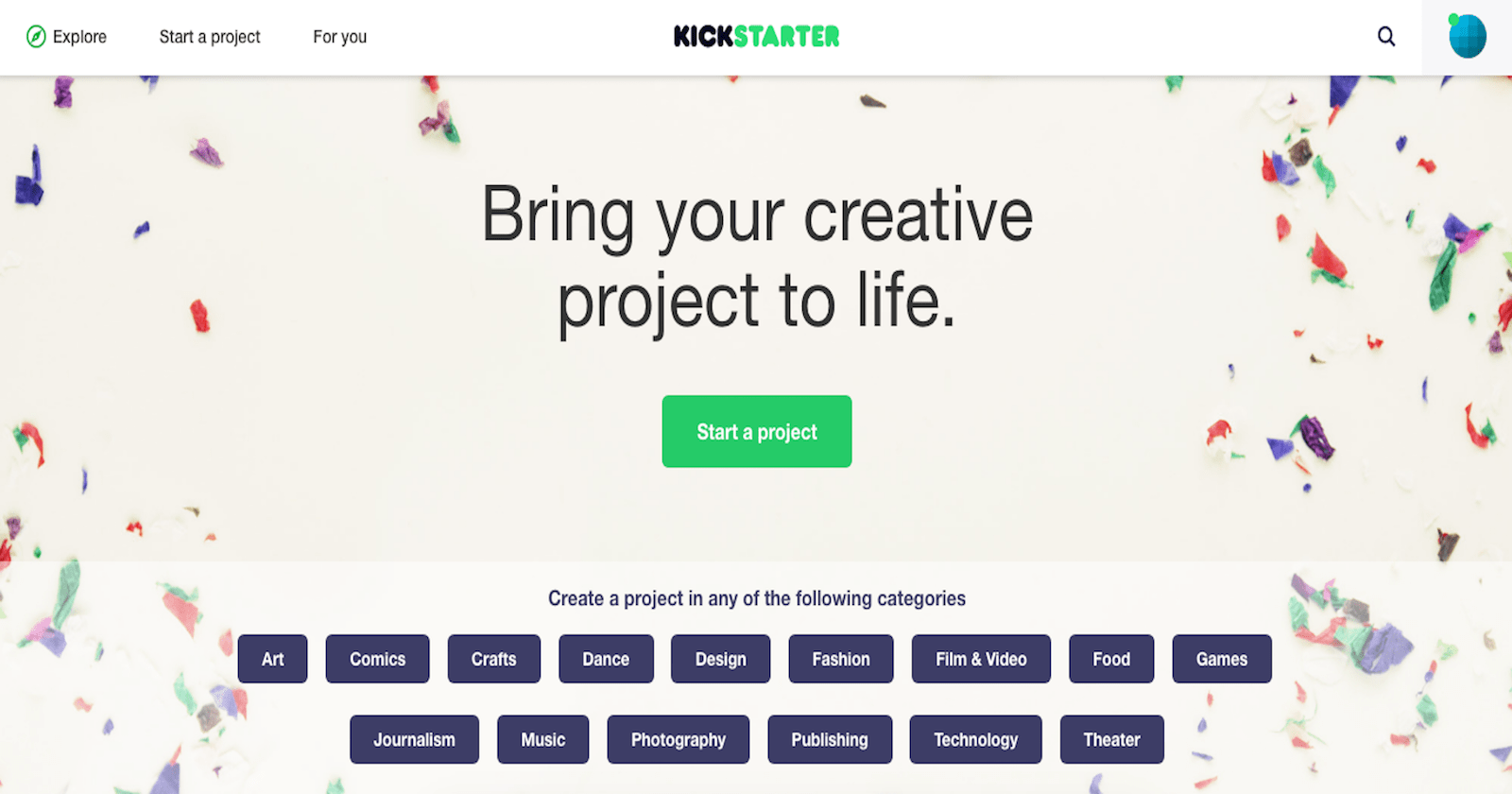Since it’s inception in 2009, Kickstarter has become the go-to destination for those searching for a revolutionary game, creating an eye-opening documentary, or launching technologically advanced products. And it’s completely changed the business world since it allows entrepreneurs to validate their ideas and secure funding without having to take out a loan or credit.
While that’s a good thing for both customers and business owners, the problem is: How can you get your campaign to rank higher so it gets spotted by more potential backers?
You can start by following these tips and tricks for advanced Kickstarter SEO.
Laying the Foundation for Your Kickstarter Campaign
Do you know what successful Kickstarter campaigns all have in common besides an amazing product? They start building their audience at least 3-4 months in advance.
This sounds complex, especially when you’re new to crowdfunding, but you should first start by determining who your ideal customers are going to be and creating buyer personas based on information like demographics, online behavior, personal histories, interests, motivations, and pain points.
Once you’ve created your buyer personas, you’ll use that data to launch a content marketing campaign. Make sure you’re also using tried and tested SEO techniques and a solid PPC campaign so you can generate some early buzz among your audience, which in turn will drive traffic to your campaign.
When laying the foundation for your Kickstarter campaign, make sure you have the following in place:
- A blog: This is where you’ll host your content and where people are going to visit when they want more information regarding your product, so make sure it’s legit and not cheap or shoddy. You can never go wrong with a self-hosted WordPress website. They’re easier to set up, extremely customizable to fit your needs, well-designed, and load quickly.
- Landing page: This is going to encourage website visitors to sign up for your email list so they can receive future updates. Since you’re using WordPress, you can use a plugin such as Qards, Beaver Builder, or WP Landing to do this for you. Consider using an email marketing tool (e.g., MailChimp). Remember, you’re going to have to offer an incentive for people to join, like an e-book that’s related to your new product.
- Killer content: Content will get that early buzz going. Using your buyer personas, you can create content that your audience is going to gobble up and share. This means creating blog posts, infographics, videos, or podcasts that provide helpful advice and address pain points, frustrations, or concerns and offer helpful tips, advice, or ego bait. Don’t forget to make this content unique, include attention-grabbing headlines, and conduct keyword research on the topics and trends that are relevant to your industry and audience. Most importantly, have a strong and effective call-to-action so your audience will sign up for your newsletter or share the content.
- Content promotion: Why invest in amazing content if no one is going to see it? Promote your content on all your social channels, reach out to influencers, and send out press releases to industry leading publications. Don’t rule out paid campaigns like Adwords or paid advertisements on Facebook, Reddit, or Stumbleupon.
- Guest blog: There’s no better way to get in front of a new audience than to guest blog on websites that are relevant to your product. If the website owner is hesitant, provide them with some proof that you only create top-notch content by sharing data like traffic volume and social shares on previously published pieces of content.
- Join the online communities of your target audience: Obviously, you want to join the major social media sites and use tools like Klout or Followerwonk to find influencers and start engaging and interacting with them. But make sure to also join other crowdfunding websites and forums to promote your campaign. These include Crowd Funding Forum, CrowdfundingPR, or Kickstarter Forum. Once you join these communities, make sure to ask questions, leave comments, share campaigns, and even pledge to support other Kickstarter campaigns to start building up some good karma.
That may sound like a lot of work, but doing so will help ensure that you’re going to have an engaged and excited audience eagerly awaiting the launch of your campaign, which can drastically improve your Kickstarter SEO.
Building Your Kickstarter Campaign
After you’ve laid the foundation, it’s time to build and launch your Kickstarter campaign based on realistic goals. Most successful campaigns raise less than $10,000. That’s important to remember since it will guide you in determining much you should raise to fund your project, the incentives that you plan to offer your backers, and how you’ll market your campaign once it goes live.
- Offer one-of-a-kind rewards. Potential backers donate to a crowdfunding campaign because they want to feel like they’re an integral part of the project, which is why low-cost items like T-shirts or stickers that say ‘backer’ or ‘supporter’ can be effective. But if you really want to hook them, offer a once in a lifetime opportunity like adding your backers’ names to your website or giving them a chance to attend the exclusive launch event.
- Set a realistic deadline. The shorter the campaign, usually 30 days or less, the higher success rate your campaign is going to have on Kickstarter. Grab the attention of your audience as early as possible using the tactic listed above and once you’re ready to launch, focus on creating content and CTAs that have more of a sense of urgency.
- Create a press release and video. After you have a launch date, craft a press release that announces your upcoming campaign. Also film a video so you can share it or include screenshots in your press release. Don’t forget to post that video on your landing page and social channels as well so your audience can share it. According to research from MWP Digital, Kickstarter projects that included a video were 85 percent more likely to reach their funding goals than without.
- Set your funding goals. If your target is that sweet spot of $10,000 then you’re to need $2,500 per week. Since it’s easier to raise funds in the first few days of your campaign, you could set a goal of $4,000 or $5,000 during the first week then split the remaining amount throughout the next three weeks.
- Make sure your campaign page is optimized. Don’t forget to optimize your campaign page by using the right keywords. For example, if your project is wireless earbuds, then you would want to focus on keywords like “wireless earbuds” or “Bluetooth earbuds” and combine them with adjectives that people use when searching for products. In this case, it could be phrases like “high-quality earbuds.” Like optimizing your website for SEO, use these keywords in your titles and subtitles, URL, and image file names or alt texts. One quick note here: While you need visuals like a video and graphics, placing keywords in there won’t improve your rank. So find the right balance and don’t get too spammy.
Maintaining Your Live Kickstarter Campaign
You’re finally at launch day! It’s been a long and hard journey, but there’s still some work to be done if you want to maintain that sizable audience and continue attracting new audience members.
- Keep on guest blogging. Go back and find the websites that sent the highest amount of referral traffic to your email list and compose another guest blog post for them. However, this time you want to drive traffic to your Kickstarter campaign page instead of your landing page.
- Shout it from the rooftop. Once you’re live, make sure that you email your list, tweet your followers, announce it on forums, send out a press release, and proudly share the news on your blog. You need to let everyone know that your campaign is live.
- Comment. Engagement and commenting are important for Kickstarter SEO. Encourage your backers to leave a comment or ask a question — just asking them is an effective technique. On the first day, however, consider asking your friends and family to leave comments or ask questions.
- Give your backers a shout out. We all love getting recognition. Don’t forget to thank your backers publicly so they’ll share your campaign with their network.
- Keep your audience in the loop. Your audience should be informed on how the campaign is going by sharing with them information like how much money you’ve raised or positive press you’ve received every several days. It’s another way to get people to share your campaign.
- Establish a targeted PPC campaign. Set up a new PPC campaign that targets your specific audience by using contextual targets as well as managed placements on Google’s Display Network. This will ensure that your ad is shown on sites your audience may have visited in the past. You could even spend your ad dollars on individuals who have expressed interest in Kickstarter in the past.
- Use remarketing. These ads will remind your website visitors about your Kickstarter campaign.
- Monitor your performance versus your goals. Is your campaign not meeting its goals? Then you need to boost the frequency of your communications and start offering additional incentives to increase both traffic and funding. Kicktraq is a tool you can use to monitor your project.
If you’re about to launch a Kickstarter campaign, then now is the time to think of SEO. It’s going to be a lot of hard work, but doing so will ensure success for your next crowdfunding venture.
Image Credits
Featured Image: Screenshot by Eli Schwartz. Taken June 2017.





